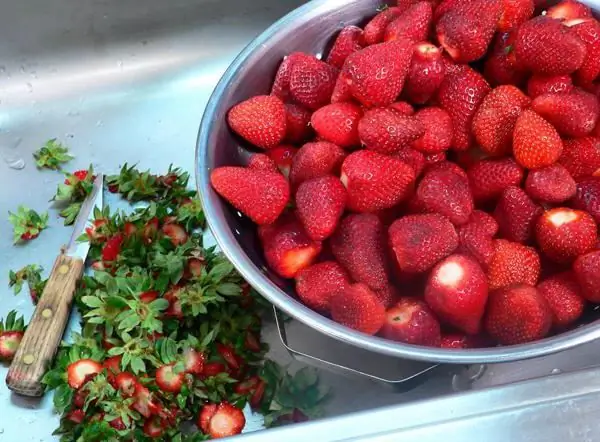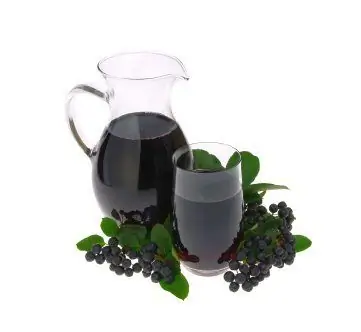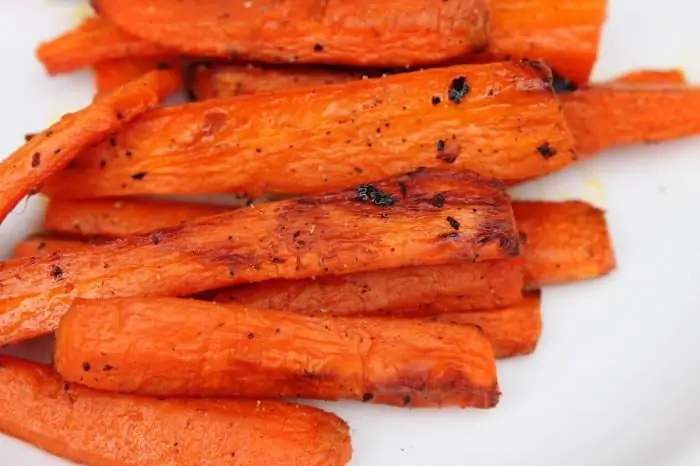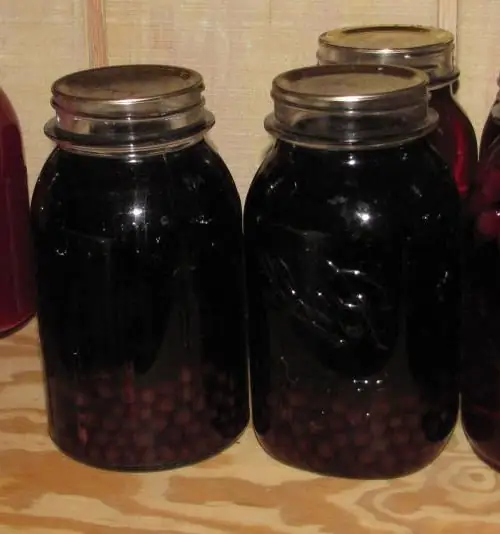2025 Author: Isabella Gilson | [email protected]. Last modified: 2025-01-23 12:50:43
Summer is the most beautiful of the seasons. It is great for relaxing, and, of course, this is the season of fresh berries and fruits. In the summer, we try to eat more vegetables - this allows us to saturate our body with useful substances and vitamins. The more such “reserves” we accumulate, the stronger our immunity will be, and hence the stronger our he alth. During this period, most hostesses try to prepare as many berries and fruits as possible for the future. These are all kinds of jams, preserves and, of course, compotes. Such vitamin reserves will delight and saturate all family members in the winter. Raspberry compote is a great solution. Its delicate pleasant taste will give odds to any store-bought drink, and it’s not even worth comparing the benefits of one and the other. Today we will pay attention to how to properly prepare such a drink, as well as suggest a simple and tasty recipe for raspberry compote for the winter. If you are just learning science under the mysterious heading of "conservation", then do not be afraid - you will certainly succeed!

What do you need for this?
The raspberry compote recipe for the winter includes only three ingredients:raspberries, water and sugar. Try to buy only the freshest berries. Carefully sort it out, remove all unnecessary: stalks, small sepals and berries that look spoiled. If the raspberry is clean, then you do not need to wash it. But if you notice contamination on some berries, then place them in a colander and rinse well under running water. Let excess moisture drain. And now let's move on to another important detail, the preparation of which will also take some time. We are talking about containers.

Tare selection
Raspberry compote for the winter is best closed in large three-liter jars. The drink is delicious, it will be drunk very, very quickly. Therefore, harvest as much as possible, because by the spring there will be no trace of your stocks. How many containers will be needed? You need to fill it with berries by about a third, this is 600 grams of raspberries per three-liter jar, but you can use a container larger or smaller in volume - everyone closes raspberry compote in their own way, it’s more convenient for anyone. Use only those containers that do not have any flaws: chips, cracks, incomprehensible stains that cannot be washed. Now the jars and lids need to be thoroughly washed, and if the dirt is strong, use baking soda. Now you can proceed to the next step - container sterilization.

Sterilization
Raspberry compote for the winter does not require sterilization, it is enough to use only sterile lids and jars. For large containers, it is better to use the oven - soyou can prepare several jars at once in a short time, and there will be no steam from boiling water in your kitchen (and you really don’t want this in the heat).
Place jars (3 l) on the wire rack in the oven with their throats up, and place the lids next to or below (with the inside up). If the lids are with rubber bands, then they need to be sterilized separately, because rubber will become unusable in the oven, but you can prepare twisted ones like this.
Turn on the oven to 180 degrees and leave the three-liter container to be sterilized for 25 minutes. For cans of 2 liters, 20 minutes is enough, and for 1 liter cans, 15 minutes. Then let the jars cool without removing them from the oven.

Close compote
A berry is poured into the cooled jars (we have raspberries). Compote for the winter can be made more concentrated by increasing the amount of berries. Traditionally, a three-liter jar takes 2.5 liters of water and 1.5 cups of sugar and raspberries, but you can customize the recipe for yourself. Now you need to prepare the syrup.
Boil water in an enamel pan, add sugar and let it dissolve completely. Now fill the jars with raspberries with this syrup and immediately close the prepared lids. Make sure the lid is tight enough, otherwise the raspberry compote will ferment and the jar will explode. To do this, carefully turn the jar upside down. The lid should not allow air to pass through, and the syrup should not flow out either. If the test was successful, wrap the jars with a blanket or warm clothes for a day, while all the jars should be turned upside down.
As you can see, making raspberry compote is not at all difficult. It has a delicate taste and pleasant aroma, and it is also very useful in the cold season. Raspberries will always come to the rescue if someone gets the flu, and children will certainly like compote from it. Enjoy your meal!
Recommended:
Strawberry compote. Strawberry compote for the winter

From wild strawberries delicious compotes are obtained, which are harvested for the winter. In the article we will consider several basic recipes
How to cook blackberry compote. Blackberry compote for the winter: recipe

Chokeberry has long been advised to take both fresh and processed for the prevention and treatment of many diseases. You can make jam from it, freeze it fresh, and also cook compotes
What to cook with carrots? How to cook carrots for the winter? How to cook carrot cutlets?

Carrot is a valuable vegetable in any respect, nutritious and has a healing effect on the human body, increases immunity and removes toxins, and it has no equal in terms of carotene content. This is a godsend for connoisseurs of he althy and diet food
Is it possible to cook apricot compote for the winter without sterilization? Use one of two methods

You can easily prepare apricot compote for the winter without sterilization. This article describes two possible ways. Following any of them, you will get the most aromatic and pulp-rich fruit drinks
Delicious grape compote for the winter without sterilization. Grape compote for the winter: a simple recipe

Usually cooking compotes takes a lot of time. It is necessary to sort out everything, rinse, cook, and after that also subject the product to additional heat treatment. But there are many options that allow you to make, for example, grape compote for the winter without sterilization. The finished product does not lose its taste at all

